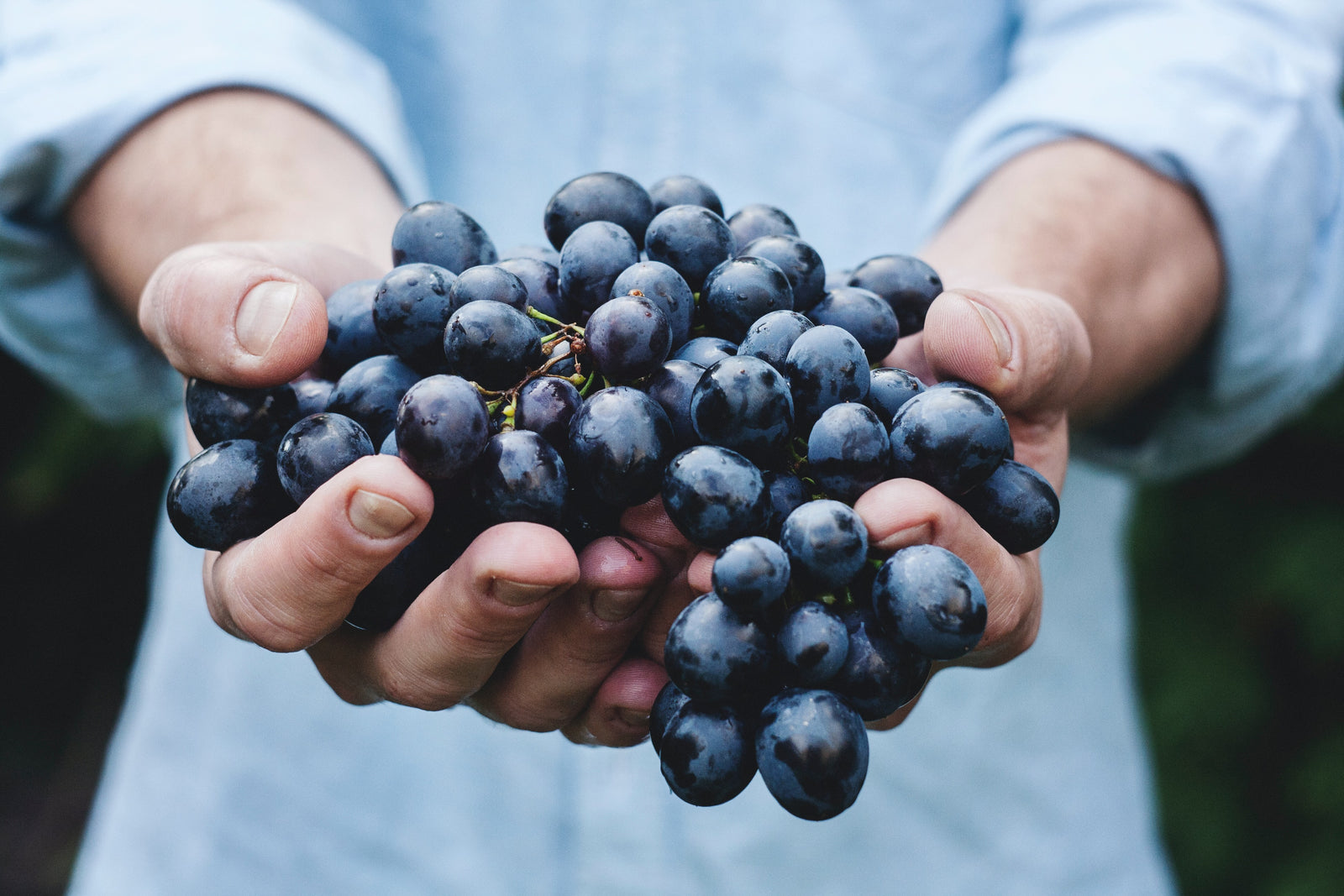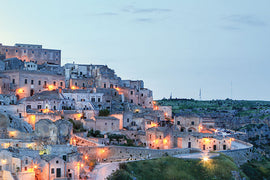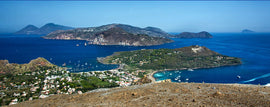Every day in California is a celebration of viticulture. The Golden State is the fourth leading wine producer in the world, after Italy, France, and Spain, and responsible for 85% of all US wine production. There are 5,900 wine grape growers and 4,200 bonded wineries across 138 AVAs (American Viticultural Areas) in the state, from the tiny Seiad Valley just south of the Oregon border to the sprawling South Coast AVA that reaches all the way to Mexico. Altogether, California farms 635,000 acres of vines, planted to 110 different varietals, that yield almost 4 million tons of grapes annually (1 ton = 63 cases of finished wine.) But September is specifically designated as California Wine Month, and with good reason - it falls right in the middle of harvest. From August to November, local wine labor is an all-hands-on-deck feat of almost ceaseless grape picking, sorting and crushing. It is the culmination of the previous year’s painstaking cultivation, and the foundation on which the entire industry - from distribution to retail and hospitality - rests. Our two wines this month are both outstanding realizations of California harvests’ past; they are a great excuse to raise a glass to the immense collective effort of the moment, and to the promise of future toasts it represents.
In the last 20 years, arguably no wine region has experienced a wine boom like that of Paso Robles. In 2000, this once sleepy farming area halfway between San Francisco and Los Angeles had 100 bonded wineries and 15,000 acres planted to grapes. Today it has over 270 wineries, with 32,500 acres of grapes. It is a large, diverse appellation located within northern San Luis Obispo County, just six miles from the Pacific Ocean, comprising a number of distinctive grape-growing regions. There are over 45 soil types found in the Paso Robles AVA, primarily bedrock-derived soils from weathered granite, older marine sedimentary rocks, and volcanic rocks. There are also younger marine sedimentary rocks of the Monterey Formation from the Miocene Age, composed of calcareous shale, sandstone, or mudstone. Caliza (“limestone” in Spanish) is an exemplary Paso Robles winery: founded in 2005 by Carl Bowker it occupies 28 organically farmed hillside acres planted in 24 unique blocks to a host of Rhone varietals. The End of the Day Cuvee is a special blend made in tribute to the vineyard workers at Caliza and elsewhere; full, lush and layered, its quality is a testament to the skill and dedication of the men and women who inspired it.
With one exception, coastal mountain ranges from Alaska down to the tip of South America run north/south to parallel their nearby shorelines. The exception is in Santa Barbara County, California, where the Santa Ynez Mountains break this rule, and open up to run east/west for about 40 miles. This east/west gap funnels cool air from the coast up to the foothills at the base of Figueroa Mountain every morning and late afternoon, but allows for enough mid-day sun to ripen wine grapes perfectly. Santa Barbara County’s diverse range of climates and soils supports seven AVAs: Santa Maria Valley, Santa Ynez Valley, Sta. Rita Hills, Ballard Canyon, Los Olivos District, Happy Canyon, and Alisos Canyon. The Brick Barn winery is located on 35 acres at the western edge of the Santa Ynez Valley AVA, Santa Barbara’s largest, near the town of Buellton. Just 10 miles from the Pacific Ocean, it is uniquely situated between the warmer inland areas of the valley and the cooler environs of the Sta. Rita Hills AVA. There are 9 varietals planted in total, including Viognier, whose vivid aromatics and vibrant acidity benefit from this confluence of sandy riverbed soils and maritime breezes.
Cheers,
The PlumpJack Wine Team
|
Caliza Winery End of The Day Cuvee 2018 |
|
|
Region / Country of Origin: Paso Robles, California |
About the winery: Born and raised in Hawaii, Carl Bowker began his farming experience while tagging along with his father, an irrigation specialist to local farms. Upon graduating from the University of Hawaii, Carl left for California to join the corporate world. After several decades he decided that a desk job wasn’t for him and began the pursuit of his passion for wine. He graduated from Napa Valley College’s Viticulture and Enology Associate program in 2004; a subsequent stint in France made it clear to Carl that he wanted to make Rhone varietals in California. In 2005, Carl and his wife Pam planted their 20 acre hillside vineyard in the Templeton Gap on the Westside of Paso Robles and started Caliza. About the winemaking: Organic composts are spread in the late fall followed by a healthy cover crop being grown from the nourishment of winter rains. These cover crops do well to feed bees, insects, and all the other biodiversity on the property. By late spring the cover crops are mowed down to provide much needed mulch to help feed the surface roots of each plant. Irrigation is minimized to allow for the plants to reach deep into the soils in search of water and nutrients. The 2018 End of the Day Cuvee is a blend of 46% Grenache, 20% Mourvèdre, 18% Syrah, 16% Tannat. 340 cases produced. Tasting Notes: Aromas of ripe red raspberry, plum, cherries, and fig jam lead to rustic earthy notes and savory tapenade on the palate. Sweet tobacco leaf, sage, and holiday spice all lift from the glass to awaken your senses as you enjoy the smooth mouth-filling characters and a lengthy finish that round out this appealing wine. |
|
Winemaker: Carl Bowker |
|
|
$26 bottle/ $280.8 case |
|
|
Suggested Food Pairing: Mediterranean Flatbread Pizza Braised Lamb with Potatoes |
|
|
Brick Barn Viognier 2019 |
|
|
Region / Country of Origin: Santa Ynez Valley, California |
About the Winery: Brick Barn Wine Estate founder, Norman Williams, originally purchased this land from the Buell family (founders of Buellton) in 1968. Shortly thereafter, the property became home to an Arabian horse farm, replete with a 36-stall brick barn created by an Italian stonemason in the early 1970s. Norman and his wife Kathleen were drawn to the idea of growing grapes—and ultimately making wine. In 2012, they planted 35 acres. The specific varieties were chosen for their synergy with the estate’s unique growing conditions, and because both Norman and Kathleen were passionate about them. About the winemaking: The Viognier fruit was harvested on September 20th after a long, steady growing season. The juice was cold fermented in stainless steel tanks with Aroma White yeast, which was chosen to accentuate the fruit’s naturally bright flavors and floral aromatics. After fermentation, wine was racked to stainless steel tanks for cold stabilization at 30 degrees, then racked one month later to cold age in stainless steel for another nine months prior to bottling. Tasting Notes: The 2019 Viognier offers lively aromas of honeysuckle, peach and melon with hints of citrus blossom. A beautifully poised mouthfeel unfolds with refreshing flavors of pear, apricot and tangerine, all carried by an undercurrent of luscious acidity. A clean, exquisite finish lingers with hints of mineral and lime zest. |
|
Winemaker: Adrian Bolshoi |
|
|
$24 bottle / $259.2 case |
|
|
Suggested Food Pairing: Seared Scallops Pad Thai |
|





